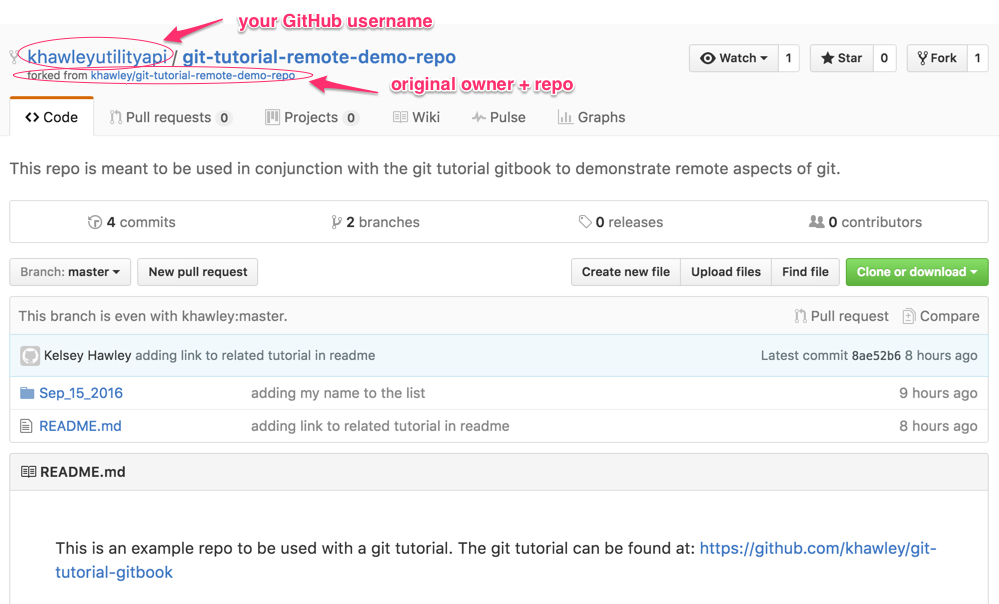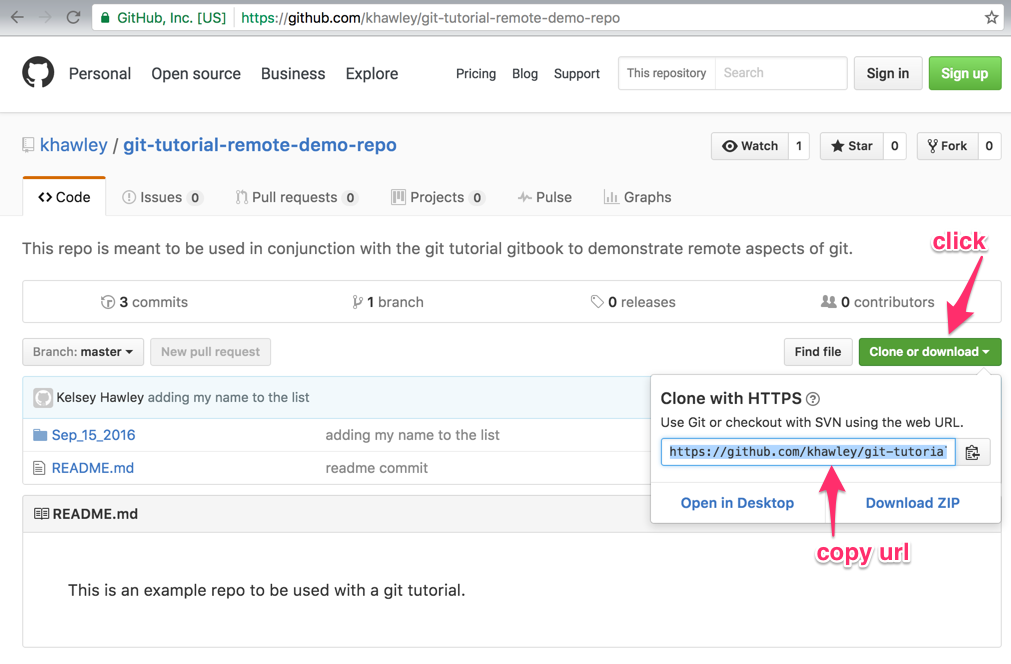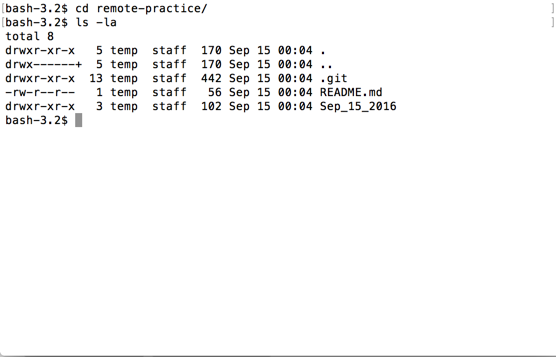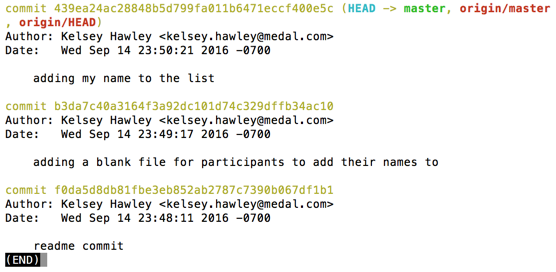git clone
Forking at Home
If you are part of a live workshop, please skip this part and move on to cloning. For this workshop, we have added your names to the list of contributors for this repo, granting you push permissions. This will allow you to experience the joys (and pains) of multiple collaborators working on a repo simultaneously.
If you are at home, please follow the examples below to first fork the repository. Forking will create a remote copy in your GitHub account and give you access to push to that repository.
Make sure you are signed in, then click the Fork button on the repo:

This will cause the original repo to be cloned into your GitHub account. You should a page like this:

Notice that the repo has your github username and then the name of the repo, with a line below stating that it was originally forked from a different owner's repo.
Now you can continue onto the cloning section. Just be sure to use your forked version when grabbing the cloning url.
Cloning
On that page, click the big green "Clone or Download button" and then copy the link.

You may notice there are other options than "Clone with HTTPS". Ignore those for now. The https url is the easiest to get started using.
git clone <remote_url> <folder_to_clone_into> is the command to copy a remote repository (at <remote_url>) to your local computer. It will copy or 'clone' the contents into the specified folder.
First cd onto your Desktop, then git clone the link.
cd ~/Desktop
git clone https://github.com/khawley/git-tutorial-remote-demo-repo.git remote-practice

Now if you cd into that directory, you'll probably see a README.md and a folder there.
cd remote-practice
ls -la

You can also do a git remote to see we have something called origin there now.
$ git remote

origin is the default remote name in a repo, just like master is the default branch name in a repo.
git remote -v will show us the verbose name of our remote repo.
$ git remote -v

You should see that the link we copied earlier to clone the repo is the same as the url listed with our git remote -v command.
If we do a git log, you'll see a new pointer next to the commits too.

origin/master and origin/HEAD now appear as pointers. This will be useful as you learn to push and pull, to be aware of what is still a local only commit and what exists on both.